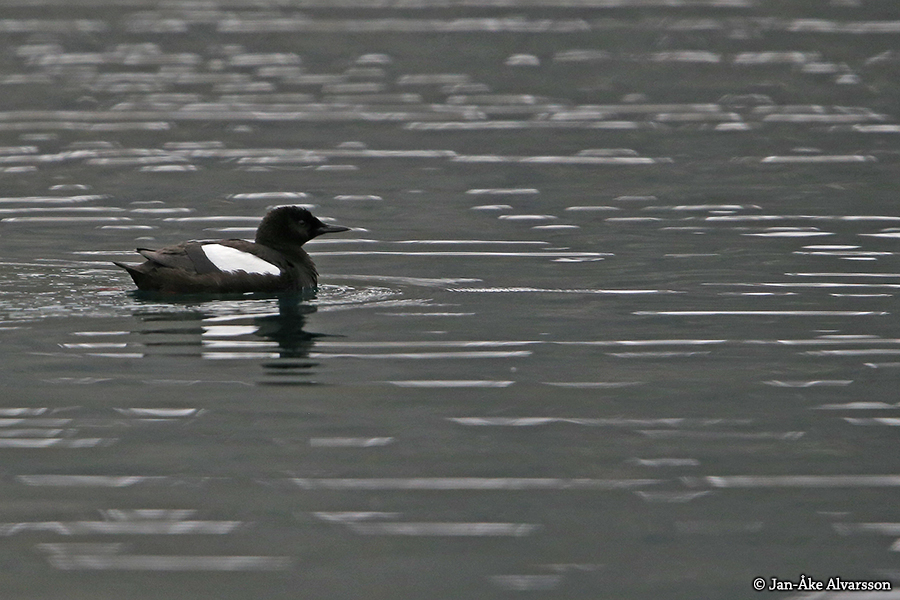
Cepphus grylle
Black guillemot
/
Tobisgrissla
18 2017-07-13 Svalbard (Spitsbergen), Norway/Norge
The distribution of the Black guillemot is difficult to map because the nests atre scattered and well hidden. The eggs are usually laid on the bare ground, under rocks or in crevices. In any extra material is necessary, pebbles are added. The eggs are laid in May-June and the nest contains two to three eggs. Both parents brood for 29 days. The fledgelings leave the nest fairly early. At the time, they are so heavy that they cannot fly (but they can of course swim) and they become completely independent only some time afterwards.
Tobisgrisslans utbredning är svår att kartlägga eftersom bona är utspridda och väl dolda. Äggen läggs oftast på bara marken, under stenar eller i bergsskrevor. Behövs något bomaterial används småsten. Äggen läggs i maj-juni och boet kan innehålla två till tre ägg. Båda föräldrarna ruvar under 29 dagar. Ungarna lämnar boet innan de är flygfärdiga. De är då så tunga att de inte kan flyga (men givetvis simma) och blir helt självständiga först en tid därefter.